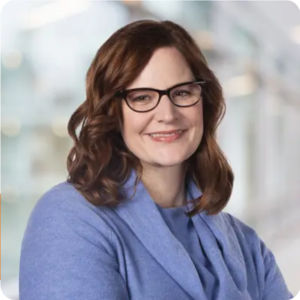The added benefit is that our partnership principles can also inform our LLD approach . By taking the time and space to define our vision for effective partnerships, we are now able to take more concrete steps, while working internally to more clearly articulate our overall organizational approach to advancing LLD.
One thing we have learned along the way is that LLD has no set roadmap. There is no correct entry point for where and how to start. The important thing is to begin, and to recognize the importance of an adaptable, iterative, and interconnected approach.
What do you want others to know about the process of operationalizing this kind of change? What worked?
Building ownership right from the project’s outset is so important. Anything new – a strategy or approach – must be embraced across teams at the start and reinforced by appointing a dedicated leader for implementation. If people across teams aren’t part of the development of the new approach it will show during roll-out. Looking back, it was hard for a new leader to come in and try to finalize a framework that is highly organization-specific and contextual, and so complex, as equitable partnerships.
For meaningful engagement, these types of internal conversations need to be built on trust and trust takes time. While I’m glad we had a solid foundation to build from, I certainly wish we had more time and resources to develop something that fully reflected all the diverse perspective across our organization. We also recognize there was a time gap between the working group’s engagement and this project deliverable. Minimizing the gap could have helped prevent a lapse in ownership over time.
Furthermore, regarding operationalization, it’s important to understand that this is just a framework. Much of the real work is already happening. The framework is meant to help enhance what is ongoing and push the organization to think beyond our current actions. That said, even the most well-crafted framework can collect dust on a shelf without a plan for implementing it. We still have work to do here. Taking the time for reflection and translating ideas into action is vital—and it’s tough to find the time for that reflection and planning when there are so many competing priorities and donor deliverables. Finding ways to integrate the principles, framework, and tools into ongoing activities, be that proposal development, partnership agreements, or new partnership development, will be key to practically applying this work going forward.
Can you share the experience of collaborating with Humentum?
The decision to involve external consultants was grounded in practical considerations, primarily that our staff had limited bandwidth.. We also recognized the need for expertise to help us navigate the complexities and provide guidance, given the wealth of knowledge that already exists on what makes a good partnership. It also helped identify any potential blind spots.
The Humentum consultants brought valuable insights as curators, guides, translators, and thought partners This complimented the integral role our internal team members played in providing thought leadership, outlining organizational context, explaining our unique perspective and value in the overall landscape, and offering insights into our current and prior partnerships work. We really focused on trying to create a collaborative process, even though the resources were limited.
Though the final partnerships framework and toolkit may seem like a straightforward output, the journey to get here spanned over two years. However, with the support of Humentum, we developed a rich, practical, usable framework that will help us in the long run.
Together, the Humentum consultancy team embraced curiosity and had a knack for making complex concepts practical and more absorbable for everyone. Above all, the final product achieved the crucial goal of echoing EngenderHealth’s voice by maximizing inputs from the working group and through our focus group discussions.
Looking back, is there anything you would do differently?
Along with some of the areas outlined above around having more time and resourcing for additional engagement and buy-in, we also need to consider the size and accessibility of the final product. Going forward, we will likely break the framework and toolkit into more manageable sections to ensure it is digestible and reaches those who will use it, at least internally. Equal access to information is crucial, and our teams need practical tools. Ideally this would also be translated into French, so we will also be looking at how to get that done.
With a framework in place, how do you implement this meaningfully?
Now that we have a framework, the critical question becomes: how do we put it to practical use? Our objective is clear—not to introduce more complexity but to provide teams with tools that enhance the structure of their current efforts. The next step is operationalizing the new approach in a meaningful and contextualized way. This is easier said than done, because how we partner intersects with a number of other operational areas. We will need to think about our staffing, behavior change, business development, long-term organizational footprint, and funding strategy, just to name a few.
We also have to acknowledge the constraints of the existing ecosystem and the impact those constraints have on our ability to change our partnership models. For example navigating complex requirements imposed by agencies like USAID and managing the overall risk tolerance of donors when developing new partnerships or enhancing existing ones. There are also the realities of market competition. We work in a competitive field and this competition makes it difficult to be as transparent as we’d like to be with partners.
That said, I think the key lies in pinpointing where the most energy is—whether it be within the organizational structure, specific projects, or partnerships—and starting from there.
How does this fit into the bigger picture of LLD and EngenderHealth’s strategy and future?
Equitable partnerships serve as the foundation and starting point of LLD. Our next step involves a review of our strategic plan, which will include articulating our organizational approach on LLD. Although our current strategy remains pertinent, the ever-changing global landscape necessitates updates to ensure our work remains relevant and that we have a clear point-of-view on how LLD impacts our vision for the future. We are looking towards the future with open eyes, open ears, and a willingness to adapt as we go.
Are you struggling to build equitable partnerships? Humentum bridges the gap, helping you adapt your operating model to align with your strategy. Our experienced consultants partner with you to create a customized roadmap for lasting success. Contact us today for a free consultation and discover how our team can guide your organization on this journey.


